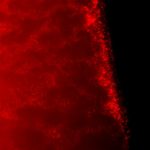Lien vers Pubmed [PMID] – 34965483
Lien DOI – S1471-4892(21)00176-410.1016/j.coph.2021.11.011
Curr Opin Pharmacol 2021 Dec; 62(): 109-116
Ligand-gated ion channels (LGIC, also referred to as ionotropic receptors) are important transmembrane proteins that open to allow ions to flow across the membrane and locally modify the membrane potential in response to the binding of a ligand. For more than a decade, a tremendous effort has been carried out in the determination of many LGIC structures in high resolution, leading to an unprecedented molecular description of channel gating. However, it is sometimes difficult to classify experimentally derived structures to their corresponding functional states, and alternative methods may help resolve or refine this issue. In this review, we focus on the application of photo-isomerizable tweezers (PIT) as a powerful strategy to interrogate molecular mechanisms of LGIC while assessing their functionality by electrophysiology.

